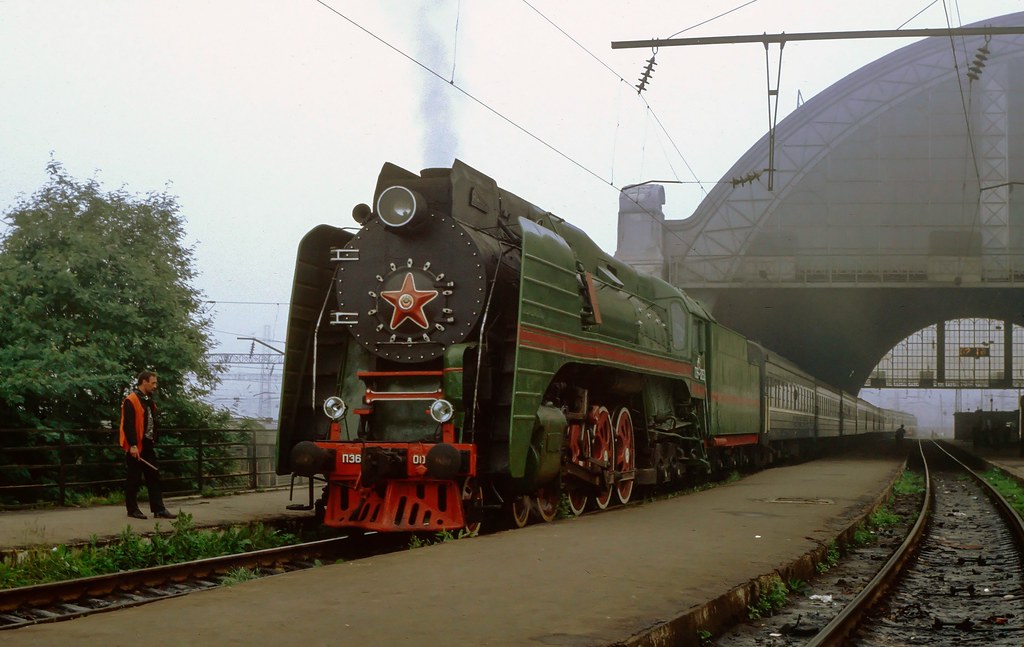#Korosten
Explore tagged Tumblr posts
Text

Porcelain teapot and milk jug by Korosten porcelain factory, Ukraine, 1970s.
63 notes
·
View notes
Text
Boycott!

Liberals from "Trump is worse" or "Do you think Trump will help Palestine?" let them go fuck themselves, because you can see how that Zionist Harris brainwashed them
But they actually supported how this female dog silenced the strikers for Palestine… So you can see what great values they have (Pro-genocide)
And yes, I will compare Russia and Ukraine to Israel and Palestine, fuck with the texts about Hamas and how the white Jewish colonizers deserve this land, it is Palestine, not Israel, Palestine was home to Islamists, Christians and Jews (Palestinian Jews, whose they murder and persecute, yes, white European Jews treat the real Jews of these lands like shit, interesting, right?), Zionism is like a fire nation and that's why it's a piece of shit
Besides, the Israelis have already shown how they treat Christians in their lands. It's funny that Christians from privileged countries who cry about "Evil Islamists persecuting Christians" haven't said a word about how Israelis treat Christians, right?
And yes, Jesus would want Palestine and he would fuck Israel, if you think otherwise, you don't know shit about Jesus
Yes, I will piss off Zionists and liberals, but is it necessary to respect people who accept genocide when they themselves do not respect people? Well, let them go fuck themselves
Now that I have your attention:
------------------------------------------------------------------
The limit of 10 links on tumblr is frustrating, because if you give more than 10, an error message will appear, so I apologize for the lack of a link to the collection from Gaza, but you just understand, the limit of 10 links makes it impossible :/
#palestinian#free palestine#israel is a terrorist state#free gaza#free free palestine#i stand with palestine#long live palestine#palestina#palestine#palestine action#palestine genocide#palestine will be free#palestinian genocide#palestinian lives matter#palestinians#pray for palestine#pro palestine#save palestine#stand with palestine#strike for palestine#support palestine#we stand with palestine#harris#cartoon#cartoonist#israel#gaza#kamala harris#vote harris#harris 2024
16 notes
·
View notes
Text




Postsoviet vibe (2) (3) (4) by Wisp
Via Flickr:
(1) Home atmosphere, Vynnyky. (2) Panel home, Korosten.
#buildings#houses#panel home#dogs#dim light#darkness#evening#nighttime#antenna#fences#ukraine#zhytomyr oblast#lviv oblast
22 notes
·
View notes
Text
Palace of the Lopukhin
Located on an island in the middle of the Ros River. City of Korosten.Ukraine.

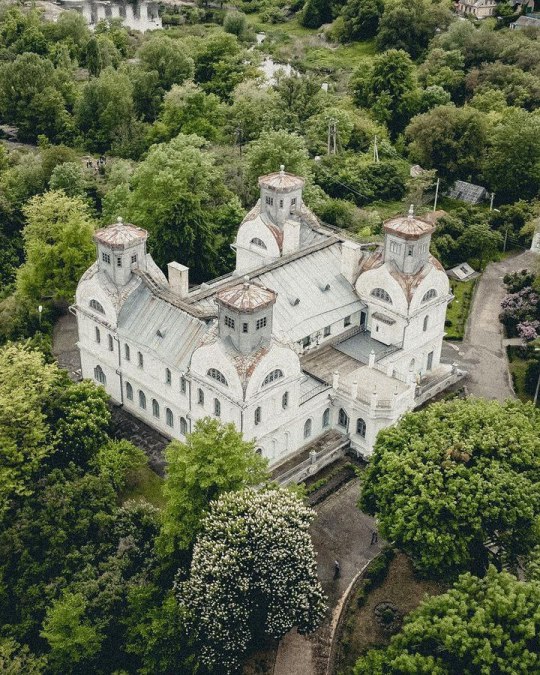
It was built in 1789 by Prince Stanisław Poniatowski, its architecture, in the neo-Gothic style, looks stunning. Of particular note are the entrance gates, executed in the spirit of French defensive architecture. Many contemporaries note that the palace (along with the adjacent territory, park) was long considered one of the richest in Europe. Founded in 1782 and intended as his own summer residence. In fact, the building was erected on the remains of a fortress of Polish princes, which was built on the Ancient Rus' hillfort of the town of Korosten. Initially, talented architects named Lindsay and Muntz worked on the building project. With the participation of Prince Lopukhin, the exterior of the building was significantly transformed – separate features of romanticism, classicism, supplemented with elements of Gothic, appeared. Fortunately, the revolutionary events of those times did not affect the integrity and present beauty of the palace. To this day, it has survived practically in its original form. The history of the property is controversial.


Lopukhin, in 1799, purchased the estate from the Polish leader Stanisław Poniatowski, giving him 10,000 rubles in silver. A corresponding decree was separately prepared. It stated that along with the palace, trees, lands, crockery, library, and garden were transferred. One of the heirs of the estate was the most enlightened Prince Nikolai Petrovich Demidov. If the former owners of the object had enough income not only for living but also for maintaining the entire economy, then the newly minted owner began to experience significant financial difficulties. The situation was exacerbated by the abolition of serfdom, the improper lifestyle of Nikolai Petrovich. Even the work of two sugar factories of his own did not save the situation, despite the fact that other industrialists made good money on similar enterprises. It got to the point that by 1897, Lopukhin-Demidov was forced to take out a loan of 2.5 million rubles. The estate, which was estimated at that time at 4,167 thousand rubles, was mortgaged. Such significant "infusions" did not change the situation. Therefore, the prince decided to transfer his debts to the state. In 1901, he applied for guardianship of the estate in order to reduce the total debt. The historical importance of the palace, its integrity played a positive role in this matter.
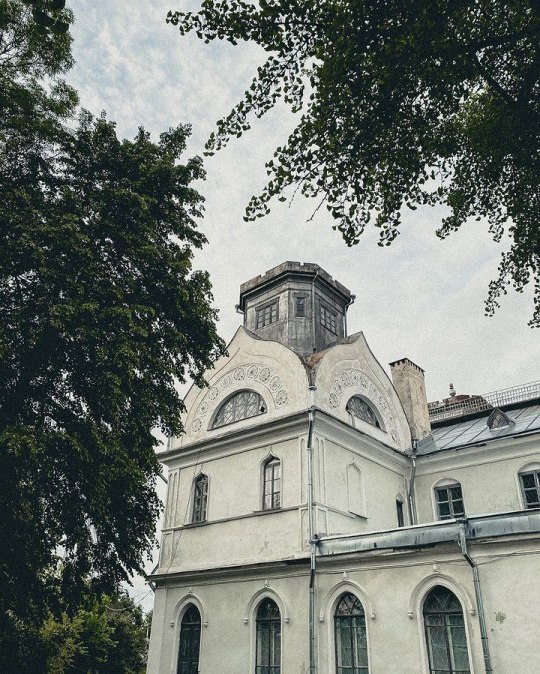
By 1902, the unfavorable condition of the estate served as an impetus for its sale, transfer to the state balance. The lack of working capital, excessive indebtedness, the obligations of the Lopukhin-Demidov family contributed to the activation of this process. Numerous efforts did not allow getting rid of debts. Again, in 1907, the palace was laid down for another 66 and a half years. The composition of the guardianship management changed several times, while the total debt continued to grow. The situation began to get out of control, and Nikolai Petrovich turned to the emperor for help. It turned out that the cause of all the troubles was the manager, whom they did not prosecute after proving his guilt. Nikolai Petrovich planned that within the next three to four years, he would be able to settle private debts, a little later – with the rest. At the end of 1910, the Most Enlightened One died. His wife applied for the preservation of guardianship over the inheritance. The descendants of Lopukhin-Demidov (sons) rarely visited the estate, preferring other countries.
The estate went through a difficult time during World War II, in 1944. In Korosten, the 80-thousand-strong army of German invaders was based, who were successfully "knocked out" from their positions .For this operation, the city was awarded the Order of the 1st degree. By February 14, the city was completely liberated from the fascists. Today, there is a thematic museum in the estate dedicated to the Great Battle.

#architecture#ukrainians on tumblr#beautiful architecture#beautiful places#historic architecture#ukraine#ukrainians#castle#ukrainian castle#ukraine history#architectural heritage
8 notes
·
View notes
Text

Malusha Malkovna was allegedly a servant for Olga of Kiev and concubine of Sviatoslav I of Kiev. According to Slavonic chronicles, she was the mother of Vladimir the Great and sister of Dobrynya. The Norse sagas describe Vladimir's mother as a prophetess who lived to the age of 100 and was brought from her cave to the palace to predict the future. There are monuments of Malusha with her young son, Vladimir, in Korosten, Ukraine.
4 notes
·
View notes
Text

Steam locomotive DR 01 1531-1 with express train No. 67 (D248) Kyiv - Warsaw - Berlin (via Teterev, Korosten, Sarny and Brest) in Frankfurt an der Oder, Germany. At the end of the VBS train from Vilnius. 02.04.1994
1 note
·
View note
Text
Епізод четір (4) 12 Октябр 2009
Епізод четір (4) 12 Октябр 2009



Привет всем! Сегодня мы идем в Чернобыльский музей стихийных бедствий, пьем борщ и курицу по-киевски, идем в Национальный музей народной архитектуры и быта Украины в Пироговском районе и еще раз ужинаем на Вулицкой Крещатике.
🇺🇦 Привіт всім! Сьогодні ми заходимо до музею Чорнобильської катастрофи, перекусили борщ та курячі киї, вирушимо до Національного музею народної архітектури та побуту України в Пирогівському районі та ще раз насолоджуємось вечерею на Вулиці Крещатику.
🇧🇾 Прывітанне ўсім! Сёння мы заходзім у музей катастрофы на Чарнобыльскай АЭС, едзем у баршце і курыным кіеве, заходзім у Нацыянальны музей народнай архітэктуры і побыту Украіны ў Пярохаўскім раёне і яшчэ раз задавальняем вячэрай на Вуліцы Крэшчатык.
Monday 12th October 2009 was a sunny day, with a break from the rain of the previous day. The morning was upper 40s and warmed to the lower 60s / about 15 to 17 Celsius.
I did not want to go to the restaurant close to the hostel for breakfast, but wanted to try a place near the St. Michael’s monastery called “Double Coffee”. I took the trolleybus line 18 to Sofiiska Square close to Maidan Nezalezhnosti and found Double Coffee at the corner of Ryl’s’kyi Provylok and Vulitsa Volodimirs’ka. I had some coffee before deciding on one of their interesting egg dishes, called “pink eggs”. It was scrambled eggs with bell pepper and bacon, and a red pepper and sour cream sauce. I liked the place so I came back the next day before leaving for Korosten and eventually Minsk.
After breakfast I walked down Vulitsa Sofiivska to Maidan Nezalezhnosti, and caught the blue line metro to Kontraktova Ploshcha. The Ukrainian National Chernobyl Museum was a block away. It is easiest to access via Vulita Spas’ka to the south. If you pass the Budynok Petra 1 (Peter I castle), make sure you go counterclockwise and not down Vulitsa Khoryva. At least not yet, as I would go that way for lunch after the Chernobyl museum. When you get to the museum, you will notice three USSR-era service vehicles, one painted a very bright red.
What was the Chernobyl disaster? Chernobyl was an industrial town towards the border with Belarus and towards the Russian Federation. In April 1986, a severe meltdown and explosion occurred at the nuclear plant, resulting in nuclear radiation spilling mostly into Belarus. Much of the area had to be evacuated. The only current residents are the elderly, but there are no young people there. This disaster was attempted at the time to be covered up by the Soviet media, but eventually the western world found out days later. It was talked about for several months on the news and was in everyday conversations as well. So far the risk of radiation still exists, but those visiting the actual site may not experience adverse effects. The governments of Belarus and Ukraine do not want to take chances and they clearly mark the areas close to Chernobyl as “exclusion zones”.
It is still very controversial as to why the Chernobyl nuclear disaster occurred. The museum offers a matter of fact approach.
What was there to see in the Chernobyl museum? When you enter, they give you an audio guide that looks like a Geiger counter. You play the audio bits by number as you go along. There is a miniature diorama, I think 1:1000, that will show the actual nuclear site and the explosion – kind of like a pop-up book from childhood. There were diagrams to show that the furthest extent of the radiation was Sweden and Germany, to lesser extents. From what I have heard, the actual Chernobyl nuclear site, has been covered up and the radiation may last for another thousand years. Going to the museum, was a relatively safer option, than spending hundreds of dollars for a private van to the actual site.
After the Chernobyl museum, I walked to Vulitsa Khoryva. That was where the Garbuzyk restaurant was located. Garbuzyk is the Ukrainian word for pumpkin. The restaurant serves traditional Ukrainian food, like borsht and chicken kiev. This is what I had ordered for lunch. The borsht was seasoned just right and had the proper amount of sour cream. The chicken kiev had a tasty mushroom sauce.
The National Museum of Folk Architecture and Life of Ukraine, in the Teremky district, where I would go next, was accessible by a bus line 507 from Lybidska as that was the terminus of the blue metro line in 2009. A bus would follow along Vulitsa Vasilkivska which the blue line was since extended, then on to Velykha Okruzhna Doroha to the park. The park is a complex of different types of architecture of various rural regions. Many of the homes have thatched roofs, and there are some Orthodox chapels. I think the park took around an hour and a half to properly walk through. About 5:50 PM the park was about to close and I caught the bus line 507 to Lybidska. Traffic was not so good around Demiyivka as there was construction and traffic started to get congested.
I took the blue line from Lybidska to Maidan Nezalezhnosti and walked down Vulitsa Kreshchatyk. I found some place for supper, at the Chateau Robert Doms. It looked like a good place for Ukrainian beer and food. After dinner I walked to Palats Sportu past the Bessarabskiy marketplace, then took the green line metro to Lukianivs’ka. I took the line 18 bus to the hostel, and bought a few bottles of kvass and Ukrainian beer for the train journey planned for Tuesday the 13th. Then I went to bed.
Tomorrow, the long train journey from 🇺🇦 Kiev to 🇧🇾 Minsk via Korosten, a surprise from the previous USSR visit in 1990, pizza lunch and sharing a compartment with a babushka. Do svidanya!


0 notes
Photo
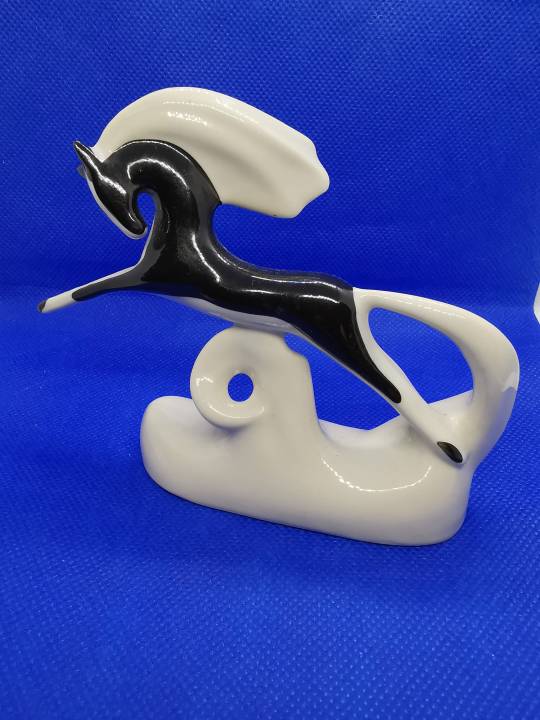
#korosten #korosten #foal beautiful horse statue figurine http://nemb.it/p/L8kYPfPxE
0 notes
Photo
www.mogafly.com Flights & Hotels Pay less & save more
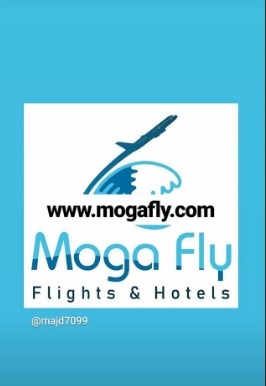
Flights & Hotels
Pay less & save more
#Novomoskovsk#Feodosiya#Kovel#Smila#Chervonohrad#Kalush#Pervomaisk#Korosten#Dovzhansk#Pokrovsk#Kolomyia#Boryspil#Rubizhne
95 notes
·
View notes
Photo
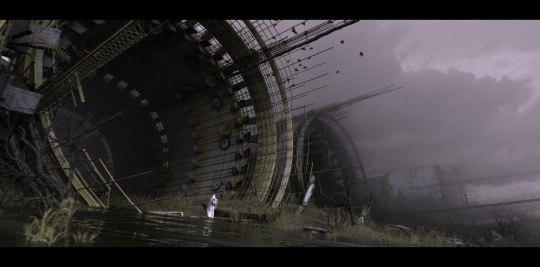
Korosten by Oleksiy Rysyuk https://www.artstation.com/artwork/48y1ZW
3 notes
·
View notes
Video
youtube
День Деруна - ✦ Коростенский фестиваль 2021
0 notes
Photo
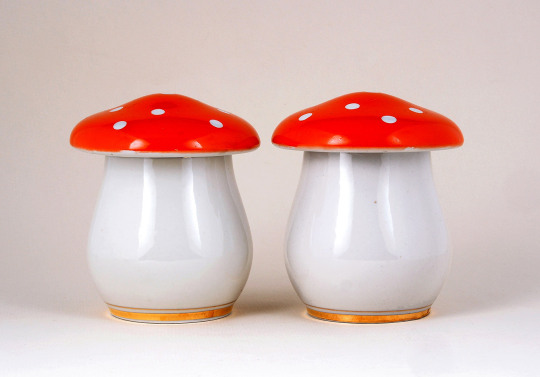
A pair of mushroom-shaped porcelain knicknack boxes. Made at Korosten Porcelain Factory (Ukraine, 1960s).
491 notes
·
View notes
Photo



the culture house of the porcelain factory in Korosten, Ukraine (1909-2012)
99 notes
·
View notes
Text
The Grand Princess Olga of Kyiv
One of the most famous Ukrainian women in history Olga [sometimes Volga, Helga, or Olena, Elena] (around 900-925) of Kyiv was a ruler and a saint.
Born in Pleskov of Varangian (Viking, thus Swedish) origin and married at 15 years old to Prince Igor I of Kyiv, Princess Olga spent most of her life in Kyiv, then the center of the Rurik dynasty and now the capital of Ukraine. At the time of her husband's reign, Kyiv was the center of the Kyivan Rus, a loose tribal federation, which fought with (meaning sometimes as allies and sometimes as enemies) the Drevlians
When the Drevlians stopped paying tribute and killed Igor, Olga began to lead as regent on behalf of her son Sviatoslav (then three years old). The Drevlians attempted to force Olga into marriage with Prince Mal, the man who murdered her late husband. Pretending to go along with it, Olga instead had the Drevlian ambassadors buried alive. Then she asked the Drevlians to send their best men, to escort her with honor, and she locked them in a bathhouse and set them all on fire. Then she got them to send a third of contingent of important Drevlian men, who she had murdered. Then she got together her army and went to war against the Drevlians, where she won rather easily, except the city of Iskorosten (now Korosten, Ukraine). She promised to end the siege for the small price of three birds from every house, and then sent those birds back ablaze and the city burned down.
Olga's revenge quest is her most interesting story, but it is worth noting that, as Ukraine's first female ruler, she was an excellent stateswoman. She expanded the lands she ruled and revamped the tribute system (the first known legal reform in all of Eastern Europe!), evaded more marriage proposals, established hunting grounds, towns, and trading posts.
She converted to Christianity and is venerated as a saint in the Eastern Orthodox Church.
#history#world history#badass women#warrior women#women's history#olga#kyiv#olga of kiev#ukraine#ukrainian history#catholicism#religious history#tw death#tw war
194 notes
·
View notes
Video
Soviet streamliner П36-0050 at L'viv Glavny. Ukraine. por Adrian Nicholls Por Flickr: The Russian "Victory" class 4-8-4 express passenger locomotives were the last mainline express steam locomotives built for SzD Soviet Railways, 251 being built between 1950-56 by Kolomna. The designation P36 was actually the locomotive works project number for the type but it became the class number when the locomotives went into production. The "П" or P as it is in latin script was significant as they became nicknamed 'Pobeda' or "Victory" class engines. П36-0050 based at Korosten depot is seen at L'viv Glavny with the UK LCGB (Locomotive Club of Great Britain) "Beskid Wanderer" railtour. With the early morning mist lifting over the gloom of L'viv's main station the train was running as the 06.11 Bryukhovichi to Khyrov (Chirov).
15 notes
·
View notes
Photo

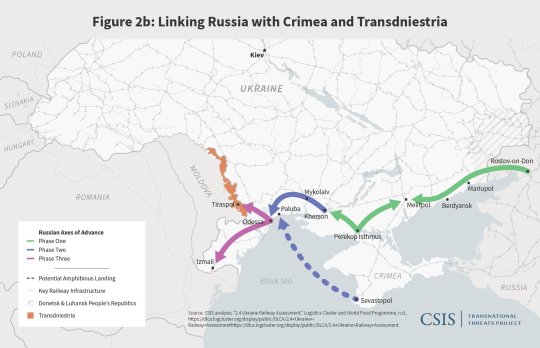

Russia’s Possible Invasion of Ukraine | Center for Strategic and International Studies
The scheme of maneuver of a Russian military invasion of Ukraine will likely be influenced by which of the above political goals the Kremlin wishes to achieve, the geography of the land and cities to be fought over, and the transportation routes to bring up logistics. If the Kremlin wishes to exercise options three, four, or six, and taking into consideration primary geography and logistics, there are three likely axes of advance to seize Ukrainian territory east of the Dnepr River, with the river as either a limit of advance or the first phase line of a larger invasion.
Northern Route: Russia could advance toward Kiev along two routes. The first would be 150 miles by road through Novye Yurkovichi, Russia; Chernihiv, Ukraine; and into Kiev, Ukraine. The second would be a 200-mile thrust through Troebortnoe, Russia; Konotop, Ukraine; Nizhyn, Ukraine; and into Kiev.6 If Minsk were to acquiesce to the use of its road and rail networks, the Russian army could outflank Ukrainian defenses around Kiev and approach them from the rear via a 150-mile axis of advance from Mazur, Belarus, to Korosten, Ukraine, and finally to Kiev.
Central Route: Russia could also advance due west along three routes. The first might include a 200-mile axis that moves through Belograd, Russia; Kharkiv, Ukraine; Poltava, Ukraine; and finally to Kremenchuk, Ukraine. The second might include a 140-mile axis thrust through Donetsk, Ukraine to Zaporizhzhia, Ukraine; and possibly also another thrust from Donetsk to Dnipro, Ukraine. The third might involve Russian forces advancing along the coastline toward Mariupol, Berdyansk, and the Perekop isthmus connecting Crimea to Ukraine.
Southern Route: Russia could also advance across the Perekop isthmus to take Kherson and the source of freshwater for Crimea and simultaneously toward the vicinity of Melitpol to link up with Russian forces advancing along the coast of the Sea of Azov. If Russia was to attempt option five, this would be the main attack coupled with the assault along the coastline toward Mariupol and Berdyansk. But it would be hardest to sustain logistically due to the lack of a railway running along the Sea of Azov coast and the main direction of advance.
Figure 2 highlights possible invasion routes. All of these routes, except the coastal one, parallel existing rail lines. This is essential since Russian army logistics forces are not designed for large-scale ground offensives far from railroads. If Russia’s objectives include denying Ukraine future access to the sea, it will have to seize Odessa. Some predict that this would be accomplished via amphibious and airborne landings near Odessa, which link up with mechanized forces approaching from the east. If Russia intends to conquer the entire country, its forces would need to seize Odessa (whose port facilities would ease Russian logistics) and also cross the Dnepr River at several points to march and fight an additional 350 to 700 miles further west to occupy all of Ukraine up to its borders with Poland, Slovakia, Hungary, Romania, and Moldova.
6 notes
·
View notes
